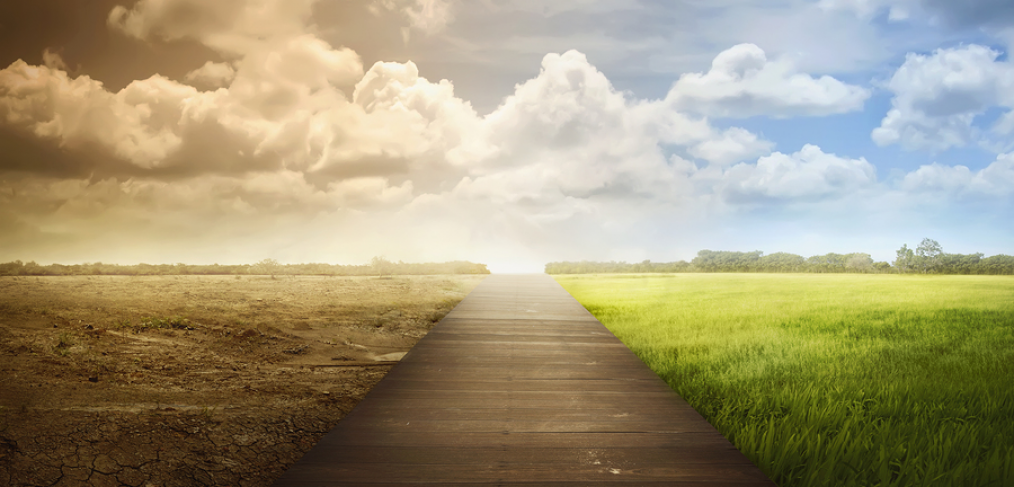
The Dire True Predictions of Climate Change

If you listened to a recent piece on NPR’s This American Life, or read National Geographic – or if you are paying attention at all to scientists’ newest predictions about sea level rise, you know that some of, or most of the biggest and most populated cities in the world are set to disappear in a permanent flood due to climate change.
In one piece, a scientist was saying he would get out of Miami, Florida soon. He would sell his house and move because he knew that sooner than later it will be worthless.
However, changed weather conditions, harsher storms, and sea levels rising are just the tip of the iceberg, as scary as those things are now.
According to an article in New York Magazine, published in July of 2017, if you are only anxious about those things you aren’t nearly anxious enough.
We tend to think of the potential catastrophes of global warming. When we think of them at all, we think in terms of hundreds of years into the future. This piece by David Wallace-Wells makes the case that scientists are actually couching their language about global warming in terms that are too reserved.
Climate Change
We could actually be looking at vast changes to our climate within the lifetime of today’s teenagers.
What we are actually dealing with is a mass extinction event. Not in our lifetime, maybe not for several lifetimes, but much sooner than we had ever thought possible.
We think of mass extinction events as having been brought about by asteroids. In fact, we know now that only one of those was. All of the others, of which our planet has undergone five, were caused by climate change brought about by greenhouse gas.
The most notable one, 252 million years ago, began when carbon warmed the planet by 5 degrees. Then it accelerated when methane was released in the Arctic. Ninety-seven percent of all life on Earth ended up dead. In comparison, we are adding carbon to the atmosphere at a rate 10 times faster.
That rate is accelerating.
Heating Up Is More Than Just About Ice
There are many different things about global warming that scientists are just now starting to realize may affect the rate at which the warming occurs. In fact, in recent news, satellite data showed that the earth has warmed at a much faster rate than scientists had thought since 1979 – 140% more.
Carbon Trapped In the Permafrost
In the winter of 2017, the North Pole experienced a string of days 60-70 degrees warmer than normal. That melted the permafrost (permanently frozen ground – or previously permanent) that held what is called the Svalbard seed vault in Norway.
It is a global food bank designed to hold our agriculture against a doomsday scenario. It was flooded less than 10 years after being built. The seeds are safe and the vault has been secured. But the real scary thing about this episode according to David Wallace-Wells is this:
“Arctic permafrost contains 1.8 trillion tons of carbon, more than twice as much as is currently suspended in the Earth’s atmosphere. When it thaws and is released, that carbon may evaporate as methane, which is 34 times as powerful a greenhouse-gas warming blanket as carbon dioxide when judged on the timescale of a century; when judged on the timescale of two decades, it is 86 times as powerful. In other words, we have, trapped in Arctic permafrost, twice as much carbon as is currently wrecking the atmosphere of the planet, all of it scheduled to be released at a date that keeps getting moved up, partially in the form of a gas that multiplies its warming power 86 times over.”
A Picture of What’s to Come
Wallace-Wells writes convincingly of many of the things which could occur as the climate heats up. Read his whole piece to see what the experts have to say on the subject. He even has an annotated edition with interviews with scientists.
But here are the big planetary changes coming our way. This will happen if we don’t end emissions of carbon before the end of the next decade. Additionally, we must find a way to take the carbon out of our atmosphere.
The current models for climate change, aiming at stopping the temperature change at 2 degrees higher, already assume that we will lose many of our major cities to floods.
Heat Death
One of the obvious problems with global warming is a rise in temperatures. Since the human body can only survive in a very small range of temperatures, a rise in temperature would make large parts of the world uninhabitable.
In fact, we have had a 50-fold increase in the places around the globe experiencing dangerous or extreme heat since 1980. The five warmest summers in Europe since the year 1500 have all occurred since 2002.
The Paris Accords goal of stopping global warming at 2 degrees will still make these already-hot places almost uninhabitable, and air conditioning will only add to the problem.
Food Scarcity
One of the other problems associated with sea levels rising is the loss of farmable land. Even with new lands uncovered by melted ice and snow, it won’t make up for lost farmland. Soil takes centuries to become fertile enough to farm.
In addition, crop yields decline by 10 percent for every degree of warming. Thus, farmable land under stress becomes less productive.
The other problem we will be facing is unprecedented levels of drought in almost every place in the world that produces food. What they are predicting is a dust bowl worse than anything we have ever seen.
Uncovered Plagues
Another scary proposition is the uncovering of bacteria which can be reanimated when unfrozen. When polar ice melts, we may encounter illnesses for which our bodies have no defenses.
Air Quality Declines
With rising carbon dioxide levels in the air, pollution, ozone smog, fossil fuel particles, wild-fire smoke, and peat forest burning, the air quality will decline severely. Global warming has already extended wildfire season by 78 days since 1970.
There is also the reality that, as more parts of the globe are subjected to drought, more forests – like the Amazon rainforest – will be vulnerable to fires.
Poisoned Oceans
More than ⅓ of the world’s carbon gets sucked up by the oceans. If it didn’t, we would already be in huge trouble. The more carbon the oceans take in, the more acidic they become.
It can potentially create a feedback loop, killing marine life (coral bleaching, or dying, is already taking place) and promoting the growth of more bacteria which make the oceans even more “anoxic.” There are already “dead zones” in the ocean, growing, in places in the Gulf of Mexico and off of Namibia bubbling with hydrogen sulfide.
Hydrogen sulfide is the gas that triggered that one time that 97 percent of all life on Earth died. It came from the seas and they didn’t recover for millions of years.
Conclusion
If you are feeling afraid and sad, it’s the right reaction. The writer of this article, which you should read, wanted to correct one problem with scientists. That problem is they don’t use strong enough language to describe what their findings mean.
Additionally, there is a blindness about climate change that we all just can’t seem to get over.
For more information, read The Uninhabitable Earth, Annotated Edition.
Over to You
What do you think about these predictions about climate change? Please share your thoughts in the comments below.

